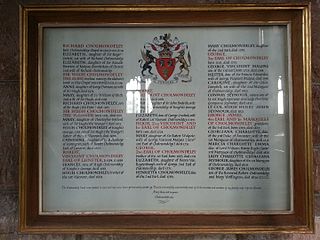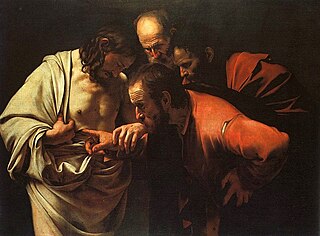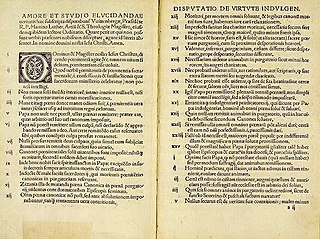
Martin Maingaud (died 1725; fl.1692-c.1725) was a French portraitist.

Martin Maingaud (died 1725; fl.1692-c.1725) was a French portraitist.

The Most Honourable Order of the Bath is a British order of chivalry founded by George I on 18 May 1725. The name derives from the elaborate medieval ceremony for appointing a knight, which involved bathing as one of its elements. The knights so created were known as "Knights of the Bath". George I "erected the Knights of the Bath into a regular Military Order". He did not revive the Order of the Bath, since it had never previously existed as an Order, in the sense of a body of knights who were governed by a set of statutes and whose numbers were replenished when vacancies occurred.

Events from the year 1725 in Canada.

Admiral Thomas Graves, 1st Baron Graves, KB was a British officer of the Royal Navy and a colonial official. He served in the Seven Years' War and the American War of Independence. He was also the Commodore-Governor of Newfoundland for a period of time.

Bleib bei uns, denn es will Abend werden, BWV 6, is a cantata by Johann Sebastian Bach for use in a Lutheran service. He composed it in Leipzig in 1725 for Easter Monday and first performed it on 2 April 1725.

Nolay is a commune in the Côte-d'Or department in eastern France. The 18th-century French physician and encyclopédiste Louis-Anne La Virotte (1725–1759) was born in Nolay, as was mathematician, physicist and politician Lazare Carnot (1753–1823).

Hugh Cholmondeley, 1st Earl of Cholmondeley, PC, styled The Honourable from birth until 1681 and then known as Viscount Cholmondeley to 1706, was an English peer and politician.

Major-General Henry Scott, 1st Earl of Deloraine KB was a Scottish peer and army officer.

Christian August of Saxe-Zeitz, was a German prince of the House of Wettin.

Schillersdorf is a commune in the Bas-Rhin department in Grand Est in north-eastern France.

Am Abend aber desselbigen Sabbats, BWV 42, is a church cantata by Johann Sebastian Bach. He composed it in Leipzig for the first Sunday after Easter and first performed it on April 8, 1725.
Events in the year 1780 in Norway.

Johann Sebastian Bach composed the church cantata Gott der Herr ist Sonn und Schild, BWV 79, in Leipzig in 1725, his third year as Thomaskantor, for Reformation Day and led the first performance on 31 October 1725.

Esch-sur-Sûre Castle, now a ruin, is located on a spur in the small town of Esch-sur-Sûre in the north-west of Luxembourg. It is naturally protected by a sharp meander in the River Sûre which surrounds the town and the castle on three sides.
Peter was the son and heir apparent of Queen Maria and King Martin I of Sicily. He was a member of the House of Barcelona.
There are 52 chorale cantatas by Johann Sebastian Bach surviving in at least one complete version. Around 40 of these were composed during his second year as Thomaskantor in Leipzig, which started after Trinity Sunday 4 June 1724, and form the backbone of his chorale cantata cycle. The eldest known cantata by Bach, an early version of Christ lag in Todes Banden, BWV 4, presumably written in 1707, was a chorale cantata. The last chorale cantata he wrote in his second year in Leipzig was Wie schön leuchtet der Morgenstern, BWV 1, first performed on Palm Sunday, 25 March 1725. In the ten years after that he wrote at least a dozen further chorale cantatas and other cantatas that were added to his chorale cantata cycle.
Thomas Smyth (1650–1725) was a Church of Ireland clergyman who served as Bishop of Limerick from 1695 to 1725.
Charles Delafaye was Member of the Parliament of Ireland for Belturbet from 1715 to 1727 and Chief Secretary to the Earl of Galway and the Duke of Grafton who held joint Governorship. Delafaye shared his that role with Martin Bladen.
Johann Sebastian Bach's chorale cantata cycle is the year-cycle of church cantatas he started composing in Leipzig from the first Sunday after Trinity in 1724. It followed the cantata cycle he had composed from his appointment as Thomaskantor after Trinity in 1723.

On Trinity Sunday 27 May 1725 Johann Sebastian Bach had presented the last cantata of his second cantata cycle, the cycle which coincided with his second year in Leipzig. As director musices of the principal churches in Leipzig he presented a variety of cantatas over the next three years. New cantatas for occasions of the liturgical year composed in this period, except for a few in the chorale cantata format, are known as Bach's third cantata cycle. His next cycle of church cantatas, the Picander cycle, did not start before St. John's Day 24 June 1728.